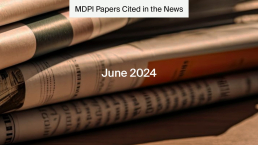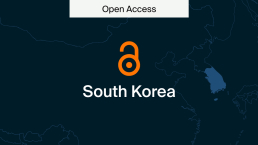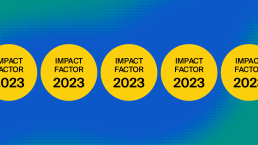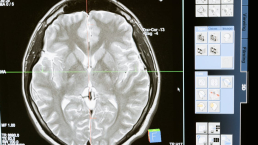
All You Need to Know About Open Access
Open Access is a rapidly developing area of scholarly publishing. In 2020, it surpassed subscription-based publishing globally. Also, since the 2000s, governments around the world have been implementing increasingly strict legislations requiring Open Access publication. We will provide you with all the information you need about Open Access and open science and how they work. Further, we will keep you updated with any changes and developments in the industry or national policy.
Definition of Open Access
Open Access (OA) is a model for publishing scholarly research that makes information, typically scholarly articles, immediately available to readers at no cost. The research is often free to reuse for scholarly purposes.
In short, some of the goals of OA are:
- Availability and reusability of scientific research for the public;
- Accessibility and transparency of scientific communication;
- Facilitating scientific collaboration;
- Transparency for the methodology, observation, and collection of data.
OA is becoming the dominant model for publishing scholarly work because of these benefits. Let’s delve deeper into the specifics of how Open Access works.
What is open science?
Open Access is part of open science, which is an umbrella term that advocates for making sure data, evaluation, and peer review are openly accessible, among other things. If Open Access aspires to make the results of the scientific process (articles) open, then open science seeks to open the entire research process.
Overall, open science aims to make scientific research transparent and more collaborative. As an umbrella term, advocates for open science approach it from many different aspects. We explore these diverse aspects below.
All you need to know about Open Access
We outline the range of topics that have been explored on the Blog with links to the full articles. We primarily focus on Open Access, also exploring topics that encompass open science.
Creative Commons licenses and Open Access copyright
Copyright plays a big role in Open Access publishing. After all, it’s the copyright holder who decides whether access is open or restricted.
Creative Commons (CC) licenses were created to fill the space between traditional copyright and the public domain. Creative Commons-licensed works can be copied, distributed, and elaborated on more easily, which is hugely beneficial to the production of knowledge. This is because they clearly define the rights of both the author and also the user accessing the material.
Simply, they let the author grant public permission to use their work under copyright law subject to the author’s preferred conditions. Also, from a reader’s perspective, they answer the question ‘What can I do with this work?’. Essentially, CC licences set the rules for the use of OA material.
In our article Open Access Copyright and Creative Commons Licenses, we outline the different variations of Creative Commons licenses and explore how they are applied in OA publishing.
Ethics in Open Access publishing
A major component of scholarly publishing is ethics. Ethics collectively determine the actions and values of members in the community.
As Open Access quickly becomes the preferred publishing model, new challenges are emerging. Threats include the growing capabilities of artificial intelligence and AI-generated content, misinformation, and financial burdens for academics and publishers.
Ethics must be maintained by the community. The Committee on Publication Ethics (COPE) aims to practically outline the ways ethics should be practised in academic publishing and how to deal with cases of scientific misconduct.
Many publishers, including MDPI, adhere to COPE’s guidelines in their editorial processes and also include their own practices and policies on how to best implement ethical scholarly publishing.
In our article Ethics in Open Access Publishing, we explore the responsibilities associated with maintaining ethics in OA publishing for the diverse roles in academia.
Leading female voices in Open Access publishing
For International Women’s Day (IWD) 2024, the focus was Inspire Inclusion. Having a diverse and inclusive community is key to achieving the aims of Open Access—removing all barriers to producing and accessing research.
Heather Joseph is the Executive Director of SPARC. She believes that “Open Access is not the end goal. It is an enabling strategy”. Open knowledge is her vision of an ecosystem where all research objects across the research lifecycle are made freely available. This would encourage more interaction through the process of research, rather than just after publication.
Eva Mendez is an expert in metadata and a Tenured Professor at the Universidad Carlos III de Madrid. In a 2023 book, she explains how OA and AI must evolve together to benefit science the most. Mendez urges that we actively preserve what underpins the scientific process: principles of honesty, trustworthiness, and transparency.
Finally, Marta Teperek is the programme leader for FAIR Data and is an advocate for data management and openness. she advocates for data champions—local advocates for good data management and sharing policies. These data champions can help share skills and create tailored data management workflows, specific to individual research groups.
In our article Leading Female Voices in Open Access Publishing, we explore the work and ideas of these three women in much more detail.
How MDPI supports scientific communities
Open Access Week 2023 focused on fostering a community mindset. We wanted to showcase the ways in which MDPI is dedicated to supporting scientific communities.
In short, the article outlines the specific ways MDPI achieves this:
- Offering waivers and discounts on article processing charges.
- Offering special discounts for societies affiliated with MDPI journals and institutions that are part of our Institutional Open Access Program.
- MDPI offers a range of awards to researchers, typically on a journal-by-journal basis.
- Special Issues are collections of papers centred around a subject of interest and are led by Guest Editors. Guest Editing provides a unique opportunity for scholars.
MDPI supports scientific communities by offering simple and flexible options for researchers. In our article, MDPI Supports Scientific Communities, we explore how in more detail.
Open Access policies around the world
Open Access policies or mandates are rules or requirements set by governments, funding agencies, or institutions that require work to be published in an OA format.
How strict the requirements are can vary, with some suggesting and supporting OA publication and others requiring that all publications be published in a specific repository or journal. Also, different governments or institutions will have their own ways of achieving OA, via repositories or journals, for example.
Countries around the world are applying policies and mandates to varying degrees, often reflecting a government’s aims.
Our article Open Access Around the World outlines policies in various countries, including the USA, China, and the EU. It links to articles that explore each country’s policies in greater detail.
Open Access values and academia
The history of academic research is linked to technological advances in the pursuit of producing and disseminating knowledge internationally.
Academia’s history tends to be traced back to the ancient world, with Plato’s olive groves, the Library of Ashurbanipal, and the Library of Alexandria.
The printing revolution in the 15th century enabled the mass printing of texts. And later, in the 17th century, scientific journals were created, growing rapidly in the 19th century. Subscriptions to such journals became the basic model for scholarly communication until the mid-20th century.
However, the digital revolution created an opportunity to innovate. The Internet significantly reduced the costs of, increased access to, and sped up the publishing of academic research.
In our article, Open Access Values are Older Than You Think, we outline this history and also explain how the OA movement emerged to connect with academia’s ancient tradition of enabling the open spread of knowledge.
Rising importance of preprints
A preprint is a version of a scholarly or scientific paper that is published before being submitted to a peer-reviewed journal. Publishing manuscripts in peer-reviewed journals often takes months or even years from the time of submission.
For many, the importance of preprints stems from how quickly they can be circulated and feedback can be received. However, the main disadvantage of preprints is the lack of peer review, which can lead to unverified information spreading.
As of 2025, the Foundation will no longer support the payment of article processing charges, requiring its grantees to publish preprints of their work. This marks a significant change in policy for a major funder and may reflect similar upcoming changes in EU policy.
Preprints.org is MDPI’s own multidisciplinary repository that is dedicated to hosting early versions of scientific works.
Our article Rising Importance of Preprints for Open Access Funders, we define what preprints are, their pros and cons, changes in Open Access funders, and also introduce you to MDPI’s own preprints server.
What is the Barcelona Declaration on Open Research Information?
Data in the form of analytics and indicators are growing increasingly important when measuring productivity and setting priorities in academia. The Barcelona Declaration on Open Research Information, released on 16 April 2024, recognises the rising importance of data and aims to ensure it’s open.
The Declaration homepage defines research information as metadata associated with the conduct and communication of research. These data are often stored in bibliographic databases, software archives, data repositories, and research information systems.
It is a community initiative that emerged from a workshop with over 25 experts interested in changing the research landscape. The Declaration revolves around four commitments:
- We will make openness the default for the research information we use and produce.
- We will work with services and systems that support and enable open research information.
- We will support the sustainability of infrastructures for open research information.
- We will support collective action to accelerate the transition to openness of research information.
In our article What is the Barcelona Declaration on Open Research Information?, we break down the specifics of the declaration, analyse its contents, and also outline its next steps.
What is the Budapest Open Access Initiative?
The Budapest Open Access Initiative (BOAI) marked the beginning of the OA movement. In 2002, its members coined and defined OA and outlined the principles of free accessibility and usability behind it.
Before 2002, almost all journals ran subscription-based models. Around the 1990s, prices began to rise much faster than inflation. This is known as the ‘serials crisis’.
The BOAI defines Open Access to literature as “free availability on the public internet”. It recommends self-archiving by depositing research in repositories or by publishing in fully OA scholarly journals.
The twentieth anniversary statement concluded: “OA is not an end in itself, but a means to other ends, above all, to the equity, equality, usability, and sustainability of research.”
In our article Looking Back at the Budapest Open Access Initiative, we explore the declaration. From this, we reflect on its development and the support it has received as OA continues to grow.
What is visibility in Open Access publishing?
One of the most widely advertised benefits of publishing Open Access is increased visibility. Yet it’s not always clear what “visibility” means.
Essentially, the visibility of a piece of research (whether it’s an article or a book) is defined by the size of its audience, the extent of its reach, and any engagement the research generates.
Although there may be other factors involved, the visibility of a piece of research can be determined by looking at three key figures: its number of downloads, citations, and online mentions.
Visibility in OA publishing is largely optimized through online mentions. OA publishers tend to publicize their books via social media to disseminate research as widely as possible.
In our article Visibility in Open Access Publishing, we explore how these different forms of visibility work and specifically explore their utility for Open Access books.
Why submitting to an Open Access journal costs money
The answer to the question of “who pays for Open Access?” is related to the dissemination model. Traditionally, the costs involved in the publishing of articles was entirely based on the reader. Readers would have to pay for access to the content, usually via their institutions.
For OA journals, the author typically pays what is called an article processing charge. This helps to fund the journal’s editorial process.
There are several different options available to authors, including waivers, grants, subsidies, and sponsorships, that can help authors cover these costs. In addition, the costs involved in publication vary quite significantly, with some journals not charging anything.
In our article Why Does Open Access Cost Money?, we outline the costs of OA and how this differs between the various models of OA publishing.
Open Access and MDPI
MDPI is the largest Open Access publisher in the world and is leading the transition to open science.
We are committed to ensuring you stay up to date with information about Open Access. Therefore, we will be updating this post monthly with articles explaining how OA works and other topics in open science.










